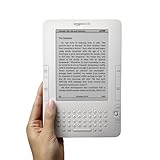Ancient roman jewelry is one of the classic examples of jewelry designing and making. Rome can be termed as the birth place of designer jewelry. It is the place where Romans incorporated various styles, designs by using gemstones in their jewelry. Romans were well known for their power and wealth. They were the people who expanded their kingdom across Europe, North Africa, Egypt and Mediterranean area. They combined their designs with different cultures and produced ostentatious jewelry adorned with many colored gemstones. It was during this period when precious stones like Emerald, rubies and diamonds were used to create a unique jewelry collection. You can also find semi precious gemstones like topaz, pearls, quartz, etc adorned with jewelry. They also used to use glass beads to make the jewelry. This technique was started by Romans which then spread everywhere during Augustan period.
Glass beads cut in diamond shape were quite popular in those days.
Popular Jewelry pieces during ancient Roman times:
Rings
Rings were the most common pieces of jewelry during the Roman era. Both men and Women use to wear rings. However, men used to wear only one ring at a time. A wide variety of rings were developed during this era. Mainly gold metal was used to make rings.
Seals
Seal rings were quite popular during the ancient Roman times.
These rings where worn by men and were not very expensive. Seal rings were the prestigious ornaments in those times. This was not only an ornament but was also used by men to seal the documents. All the official documents were sealed by the authorized men rather than signing them. Carnelian was mainly used to make signet or seal rings. This gemstone was an excellent stone as the hot wax which was used to seal the document, do not get fixed up with the gemstone.
Brooches, Fibula
In ancient roman times it wall all men and women use to wear jewelry. They use to wear rings, earrings, bracelet etc. Brooch was one of the common jewelry which Romans used to wear. This is the jewelry which is used to in up the clothing. They use to pin up items with the help of brooch rather than sewing them. They also developed fibula. It looked like safety pin to fasten up clothing. All these fasteners were made of gold incorporated with various precious and semi precious stones. It was used by both men and women in ancient times to fasten up their clothing.
Cameo
Another jewelry which Romans used to wear was a Cameo. It was every woman’s charm. The designs carved on the stones often resembled the scenes of Roman methodology. Today also Cameo is termed as the classic piece of jewelry. It is the one which almost all the women love to have in their attire.
Bulla
Bulla is another jewelry which was worn by the Romans around their neck. It was not just an ordinary decorative jewelry but contained symbols which can provide them protection, security and wealth. Bulla is a pendant consisted of round container containing amulets which Romans use to give to their babies for their protection. This contained phallic symbols. Bulla was available in a variety of metals of which gold metal was commonly used. The rich Romans use to wear gold rings containing phallic symbols for fortune.
Other Jewelry for Women:
Like in other cultures ancient Roman women were fond of wearing jewelry. Jewelry was every women charm. They use to wear wide range of jewelry like rings, amulets, pendants, cameos etc. Brooches and Fibula were also worn by them to pin up their clothing. All these fasteners were made of gold incorporated with various precious and semi precious stones. They also use to wear snake styled Gold bracelets. Bracelets were usually made up of gold. Precious stones like Emerald, rubies and diamonds were used to create necklaces. Semi precious gemstones like topaz, pearls, quartz, etc were also used to bring more colors and designs to this jewelry.



